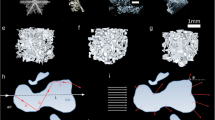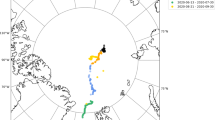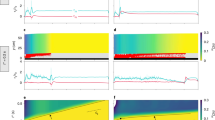Abstract
IT is well known that the friction of solids on snow surfaces is larger than on ice surfaces. The higher kinetic friction obtained on snow is attributed to the extra work done in displacing and compressing the snow crystals1. This may apply to the sliding of a ski or a sleigh on snow. It is, however, common experience that snow also while resting, for example, on the roof of a house or on a metal spade, exhibits a considerable angle of repose.
This is a preview of subscription content, access via your institution
Access options
Subscribe to this journal
Receive 51 print issues and online access
$199.00 per year
only $3.90 per issue
Buy this article
- Purchase on Springer Link
- Instant access to full article PDF
Prices may be subject to local taxes which are calculated during checkout
Similar content being viewed by others
References
Bowden, F. P., and Hughes, T. P., Proc. Roy. Soc., A, 172, 208 (1939).
Author information
Authors and Affiliations
Rights and permissions
About this article
Cite this article
SCHNURMANN, R. Angle of Repose of Snow on Solids. Nature 145, 553–554 (1940). https://doi.org/10.1038/145553c0
Issue Date:
DOI: https://doi.org/10.1038/145553c0
Comments
By submitting a comment you agree to abide by our Terms and Community Guidelines. If you find something abusive or that does not comply with our terms or guidelines please flag it as inappropriate.



